SNVS032E February 2000 – January 2016 LM2651
PRODUCTION DATA.
- 1 Features
- 2 Applications
- 3 Description
- 4 Revision History
- 5 Pin Configuration and Functions
- 6 Specifications
- 7 Detailed Description
- 8 Application and Implementation
- 9 Power Supply Recommendations
- 10Layout
- 11Device and Documentation Support
- 12Mechanical, Packaging, and Orderable Information
Package Options
Mechanical Data (Package|Pins)
- PW|16
Thermal pad, mechanical data (Package|Pins)
Orderable Information
6 Specifications
6.1 Absolute Maximum Ratings
over operating free-air temperature range (unless otherwise noted)(1)(2)| MIN | MAX | UNIT | ||
|---|---|---|---|---|
| Input voltage | 15 | V | ||
| Feedback pin voltage | −0.4 | 5 | V | |
| Power dissipation (TA = 25°C)(3) | 893 | mW | ||
| Junction temperature, TJ | −40 | 125 | °C | |
| Storage temperature, Tstg | −65 | 150 | °C | |
(1) Stresses beyond those listed under Absolute Maximum Ratings may cause permanent damage to the device. These are stress ratings only, which do not imply functional operation of the device at these or any other conditions beyond those indicated under Recommended Operating Conditions. Exposure to absolute-maximum-rated conditions for extended periods may affect device reliability.
(2) If Military/Aerospace specified devices are required, please contact the TI Sales Office/ Distributors for availability and specifications.
(3) The maximum allowable power dissipation is calculated by using PDmax = (TJmax – TA) / θJA , where TJmax is the maximum junction temperature, TA is the ambient temperature, and θJA is the junction-to-ambient thermal resistance of the specified package. The 893-mW rating results from using 150°C, 25°C, and 140°C/W for TJmax, TA, and θJA respectively. A θJA of 140°C/W represents the worst-case condition of no heat sinking of the 16-pin TSSOP package. Heat sinking allows the safe dissipation of more power. The absolute maximum power dissipation must be derated by 7.1 4 mW per °C above 25°C ambient. The LM2651 actively limits its junction temperature to about 165°C.
6.2 ESD Ratings
| VALUE | UNIT | |||
|---|---|---|---|---|
| V(ESD) | Electrostatic discharge | Human-body model (HBM), per ANSI/ESDA/JEDEC JS-001(1) | ±1000 | V |
(1) JEDEC document JEP155 states that 500-V HBM allows safe manufacturing with a standard ESD control process.
6.3 Recommended Operating Conditions
over operating free-air temperature range (unless otherwise noted)| MIN | NOM | MAX | UNIT | ||
|---|---|---|---|---|---|
| VIN | Supply voltage | 4 | 14 | V | |
6.4 Thermal Information
| THERMAL METRIC(1) | LM2651 | UNIT | |
|---|---|---|---|
| PW (TSSOP) | |||
| 16 PINS | |||
| RθJA | Junction-to-ambient thermal resistance | 97.3 | °C/W |
| RθJC(top) | Junction-to-case (top) thermal resistance | 29.9 | °C/W |
| RθJB | Junction-to-board thermal resistance | 43.1 | °C/W |
| ψJT | Junction-to-top characterization parameter | 1.8 | °C/W |
| ψJB | Junction-to-board characterization parameter | 42.4 | °C/W |
| RθJC(bot) | Junction-to-case (bottom) thermal resistance | — | °C/W |
(1) For more information about traditional and new thermal metrics, see the Semiconductor and IC Package Thermal Metrics application report, SPRA953.
6.5 Electrical Characteristics
specifications are TJ = 25°C and VIN = 10 V (unless otherwise specified)(1)| PARAMETER | TEST CONDITIONS | MIN | TYP(2) | MAX | UNIT | ||
|---|---|---|---|---|---|---|---|
| LM2651-1.8 | |||||||
| VOUT | Output voltage | ILOAD = 900 mA | TJ = 25°C | 1.761 | 1.8 | 1.836 | V |
| Over full operating junction temperature range | 1.719 | 1.854 | |||||
| Output voltage line regulation | VIN = 4 V to 14 V, ILOAD = 900 mA | 0.2% | |||||
| Output voltage load regulation | ILOAD = 10 mA to 1.5 A, VIN = 5 V | 1.3% | |||||
| ILOAD = 200 mA to 1.5 A, VIN = 5 V | 0.3% | ||||||
| VHYST | Sleep mode output voltage hysteresis | 35 | mV | ||||
| LM2651-2.5 | |||||||
| VOUT | Output voltage | ILOAD = 900 mA | TJ = 25°C | 2.43 | 2.5 | 2.574 | V |
| Over full operating junction temperature range | 2.388 | 2.575 | |||||
| Output voltage line regulation | VIN = 4 V to 12 V, ILOAD = 900 mA | 0.2% | |||||
| Output voltage load regulation | ILOAD = 10 mA to 1.5 A, VIN = 5 V | 1.3% | |||||
| ILOAD = 200 mA to 1.5 A, VIN = 5 V | 0.3% | ||||||
| VHYST | Sleep mode output voltage hysteresis | 48 | mV | ||||
| LM2651-3.3 | |||||||
| VOUT | Output voltage | ILOAD = 900 mA | TJ = 25°C | 3.265 | 3.3 | 3.379 | V |
| Over full operating junction temperature range | 3.201 | 3.399 | |||||
| Output voltage line regulation | VIN = 4 V to 14 V, ILOAD = 900 mA | 0.2% | |||||
| Output voltage load regulation | ILOAD = 10 mA to 1.5 A, VIN = 5 V | 1.3% | |||||
| ILOAD = 200 mA to 1.5 A, VIN = 5 V | 0.3% | ||||||
| VHYST | Sleep mode output voltage hysteresis | 60 | mV | ||||
| LM2651-ADJ(3) | |||||||
| VFB | Feedback voltage | ILOAD = 900 mA | TJ = 25°C | 1.238 | V | ||
| Over full operating junction temperature range | 1.2 | 1.263 | |||||
| VOUT | Output voltage line regulation | VIN = 4 V to 14 V, ILOAD = 900 mA | 0.2% | ||||
| Output voltage load regulation | ILOAD = 10 mA to 1.5 A, VIN = 5 V | 1.3% | |||||
| ILOAD = 200 mA to 1.5 A, VIN = 5 V | 0.3% | ||||||
| VHYST | Sleep mode output voltage hysteresis | 24 | mV | ||||
| ALL OUTPUT VOLTAGE VERSIONS | |||||||
| IQ | Quiescent current | TJ = 25°C | 1.6 | mA | |||
| Over full operating junction temperature range | 2 | ||||||
| IQSD | Quiescent current in shutdown mode | Shutdown pin pulled low | TJ = 25°C | 7 | 12 | µA | |
| Over full operating junction temperature range | 20 | ||||||
| RSW(ON) | High-Side or low-side switch on resistance (MOSFET on resistance + bonding wire resistance) | ISWITCH = 1 A | 110 | mΩ | |||
| RDS(ON) | MOSFET on resistance (high-side or low-side) | ISWITCH = 1 A | TJ = 25°C | 75 | mΩ | ||
| Over full operating junction temperature range | 130 | ||||||
| IL | Switch leakage current - high side | 130 | nA | ||||
| Switch leakage current - low side | 130 | ||||||
| VBOOT | Bootstrap regulator voltage | IBOOT = 1 mA | TJ = 25°C | 6.45 | 6.75 | 6.95 | V |
| Over full operating junction temperature range | 6.4 | 7 | |||||
| GM | Error amplifier transconductance | 1250 | µmho | ||||
| VINUV | VIN undervoltage lockout threshold voltage | Rising edge | TJ = 25°C | 3.8 | V | ||
| Over full operating junction temperature range | 3.95 | ||||||
| VUV-HYST | Hysteresis for the undervoltage lockout | 210 | mV | ||||
| ICL | Switch current limit | VIN = 5 V | TJ = 25°C | 2 | A | ||
| Over full operating junction temperature range | 1.55 | 2.6 | |||||
| ISM | Sleep mode threshold current | VIN = 5 V | 100 | mA | |||
| AV | Error amplifier voltage gain | 100 | V/V | ||||
| IEA_SOURCE | Error amplifier source current | TJ = 25°C | 25 | 40 | µA | ||
| Over full operating junction temperature range | 15 | ||||||
| IEA_SINK | Error amplifier sink current | TJ = 25°C | 65 | µA | |||
| Over full operating junction temperature range | 30 | ||||||
| VEAH | Error amplifier output swing upper limit | TJ = 25°C | 2.5 | 2.7 | V | ||
| Over full operating junction temperature range | 2.4 | ||||||
| VEAL | Error amplifier output swing lower limit | TJ = 25°C | 1.25 | 1.35 | V | ||
| Over full operating junction temperature range | 1.5 | ||||||
| VD | Body diode voltage | IDIODE = 1.5 A | 1 | V | |||
| fOSC | Oscillator frequency | VIN = 4 V | TJ = 25°C | 280 | 300 | 330 | kHz |
| Over full operating junction temperature range | 255 | 345 | |||||
| DMAX | Maximum duty cycle | VIN = 4 V | TJ = 25°C | 95% | |||
| Over full operating junction temperature range | 92% | ||||||
| ISS | Soft-Start current | Voltage at the SS pin = 1.4 V | TJ = 25°C | 11 | µA | ||
| Over full operating junction temperature range | 7 | 14 | |||||
| ISHUTDOWN | Shutdown pin current | Shutdown pin pulled low | TJ = 25°C | 0.8 | 2.2 | 3.7 | µA |
| Over full operating junction temperature range | 0.5 | 4 | |||||
| vSHUTDOWN | Shutdown pin threshold voltage | Falling edge | TJ = 25°C | 0.6 | V | ||
| Over full operating junction temperature range | 0.3 | 0.9 | |||||
| TSD | Thermal shutdown temperature | 165 | °C | ||||
| TSD_HYST | Thermal shutdown hysteresis temperature | 25 | °C | ||||
(1) All limits are ensured at room temperature (standard typeface) and at temperature extremes. All room temperature limits are 100% production tested. All limits at temperature extremes are specified via correlation using standard Statistical Quality Control (SQC) methods. All limits are used to calculate Average Outgoing Quality Level (AOQL).
(2) Typical numbers are at 25°C and represent the most likely norm.
(3) VOUT = 2.5 V
6.6 Typical Characteristics
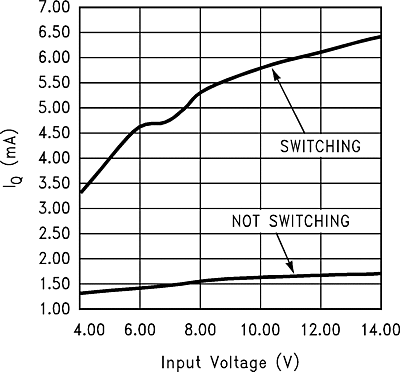 Figure 1. IQ vs Input Voltage
Figure 1. IQ vs Input Voltage
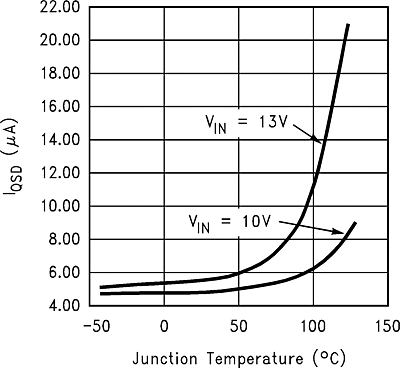 Figure 3. IQSD vs Junction Temperature
Figure 3. IQSD vs Junction Temperature
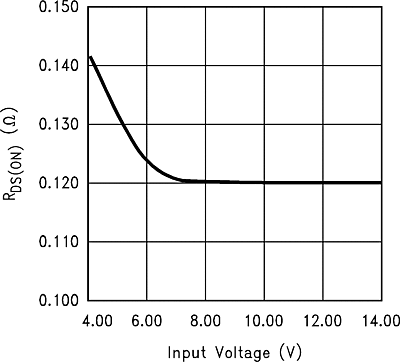 Figure 5. RDS(ON) vs Input Voltage
Figure 5. RDS(ON) vs Input Voltage
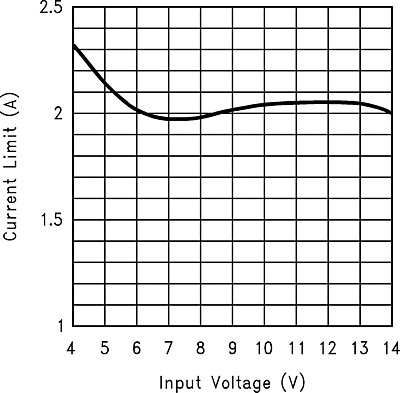 Figure 7. Current Limit vs Input Voltage
Figure 7. Current Limit vs Input Voltage(VOUT = 2.5 V)
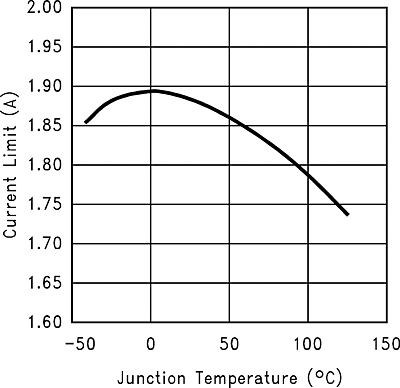 Figure 9. Current Limit vs Junction Temperature
Figure 9. Current Limit vs Junction Temperature (VOUT = 3.3 V)
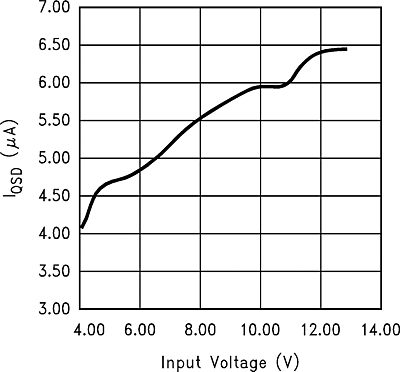 Figure 2. IQSD vs Input Voltage
Figure 2. IQSD vs Input Voltage
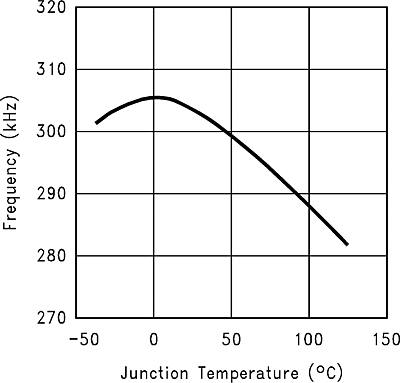 Figure 4. Frequency vs Junction Temperature
Figure 4. Frequency vs Junction Temperature
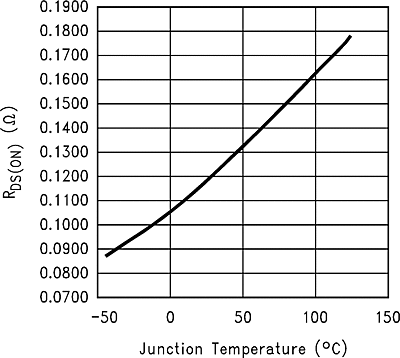 Figure 6. RDS(ON) vs Junction Temperature
Figure 6. RDS(ON) vs Junction Temperature
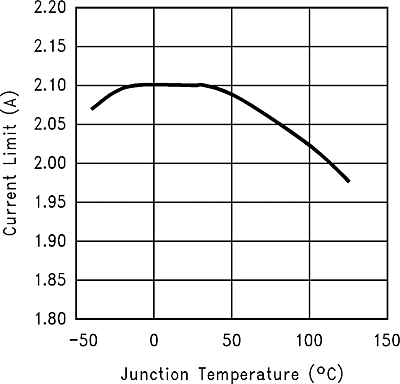 Figure 8. Current Limit vs Junction Temperature
Figure 8. Current Limit vs Junction Temperature(VOUT = 2.5 V)
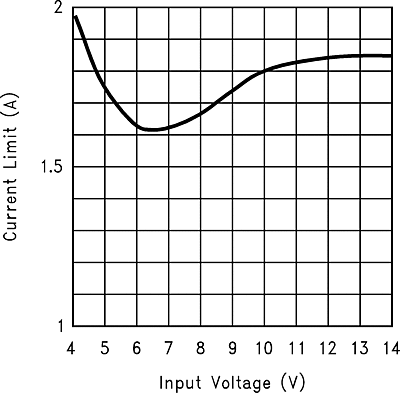 Figure 10. Current Limit vs Input Voltage
Figure 10. Current Limit vs Input Voltage (VOUT = 3.3 V)